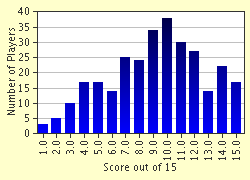Quiz Answer Key and Fun Facts
1. In Roman times, southeast Wales was inhabited by a warlike tribe called the Silurians. Tacitus described them as stubborn and valiant and in AD 52 they managed to defeat a Roman legion.
Eventually, however, the Romans overcame the Silurians and built one Britain's three legionary fortresses in their territory. Where was this fortress?
2. The first mention of this ruler was in the Welsh annals of 519. He was seen as a paragon of valour, and Welsh tradition portrays him as the great hero in the struggle against the Saxons. Who was he?
3. Wales holds the distinction of being the only country of the United Kingdom to have a home-grown patron saint. He died in AD 589 and the smallest city in the United Kingdom is named after him. What was his name?
4. Llewelyn ap Iowerth (Llewelyn, son of Iowerth) managed to unify almost all of Wales under his rule. In 1218, advisors of the young Henry III recognised Llewelyn's virtual rule over Wales and his power remained intact until his death. What was the name given to Llewelyn?
5. Although a few rulers such as Llewelyn almost managed to unify Wales for some time, this never lasted. Throughout the Middle Ages, Wales was beset by internal conflict. Which of these reasons is generally considered to be the greatest cause of this lack of unity?
6. As the Welsh border after the Norman conquest was seen as something of a frontier, the Norman kings granted special privileges to lords who would rule over these unstable lands. What name was given to these lords?
7. In 1284, after the English king had lead his armies to defeat Llewelyn ap Gruffudd, the Statute of Rhuddlan declared Wales subject to English law. Who was this English king?
8. At the start of the 15th century, a Welsh nobleman led a revolt against English rule which, due to its guerrilla tactics, almost succeeded. What was his name?
9. One of the greatest British royal lines has its origins in Wales. Who was the king, raised in Pembroke, who fought under the banner of the Welsh red dragon?
10. During the Civil War between Charles I and Parliament (1642-1648), which side did most of Wales support?
11. Growing unrest in south-west Wales, caused largely by exorbitant tolls, lead to rioting between 1839 and 1843. These riots, called 'The Rebecca Riots' mainly targeted tollgates, although attacks later spread to workhouses, unpopular magistrates and harsh land owners. What was unusual about these riots?
12. In 1801, Cardiff had a population of 1,870 and was only the 25th largest town in Wales. By 1841, the population had grown to 82,000 and it was bigger than any other town in Wales. Which industry was responsible for such a huge growth?
13. Wales has had a long association with socialism and the Labour party. Although born in Scotland, the first leader of the Labour party was elected as a member of parliament for Merthyr Tydfil. Who was this pioneering politician?
14. Tragedy struck in 1966, when a mountainous top of coal waste slid onto a small village in South Wales. The slide engulfed around 20 houses and the local school where children had just returned to their classes after morning assembly. The disaster claimed the lives of 144 people, including 111 children. What was the name of this village?
15. Ending on a happier note, which milestone of Welsh history was reached in 1999?
Source: Author
StuHern
This quiz was reviewed by FunTrivia editor
bloomsby before going online.
Any errors found in FunTrivia content are routinely corrected through our feedback system.

